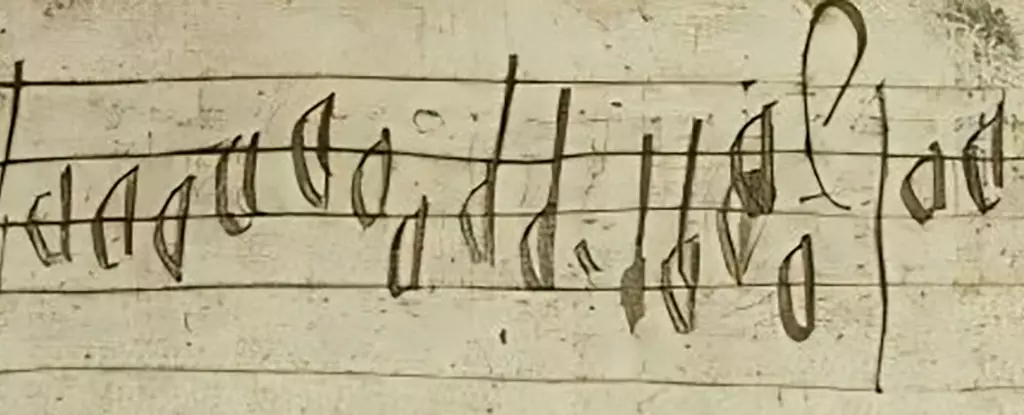Music serves as a profound link between cultures and epochs, allowing us to traverse the boundaries of time and space. The recent analysis of a 55-note musical fragment from 16th-century Scotland provides an intriguing window into a tapestry of sounds that has largely eluded history. This fragment, embedded in the margins of the Aberdeen Breviary—a significant historical text—offers a rare opportunity to understand a musical culture that faced devastating losses during the Reformation. The yearning for knowledge and connection with our past fuels the passion behind this remarkable discovery.
Published in 1510, the Aberdeen Breviary represents a pivotal advancement in Scottish print culture, being the first full-length book printed in the country. At first glance, the text may not appear to be a bestseller or an item of interest in contemporary consumerism, yet its importance to religious and musical history is incalculable. The prayers, readings, and hymns contained within reflect a Scotland transitioning into the Renaissance, where religion and the arts began to intertwine in novel ways. Within the margins of this significant text, researchers uncovered a 55-note melody that hints at a rich liturgical tradition, lost to the annals of time.
The research teams from KU Leuven and the University of Edinburgh have painstakingly examined and reconstructed this musical snippet. Although the notation does not specify an instrument or vocal arrangement, it aligns closely with a little-known Christian chant known as *Cultor Dei, memento* (“Servant of God, remember”). This chant, still present in some Anglican churches during Lent, exemplifies the continuity of musical traditions through time. Musicologist David Coney captures the essence of this historical retrieval, noting how a single line of music—a mere whisper from centuries past—can awaken an entire hymn, thus linking us to Scotland’s ecclesiastical heritage.
The notation is identified as polyphonic, characterized by multiple independent melodies interweaving to create a harmonious sound. This revelation marks a significant milestone, as it allows musicians and scholars to envision how the hymn may have been performed, transcending its written form. By recognizing this specific piece as a polyphonic composition, researchers can recreate the missing vocal parts, expanding the musical palette of this era.
Historically, there has been a common misconception that Scotland’s pre-Reformation musical landscape was devoid of richness, depicting it instead as a barren wasteland. Musicologists James Cook and Paul Newton-Jackson address this misconception, revealing a vibrant tradition of liturgical music that thrived in Scottish cathedrals, churches, and chapels prior to the Reformation. The new findings challenge the narrative that framed Scotland as lacking in cultural depth, illustrating how the upheaval of the Reformation led to the loss of much of Scotland’s musical heritage.
The analysis of the Aberdeen Breviary invites further inquiry into other historical texts and manuscripts. The potential for new musical discoveries is considerable, particularly in the unexplored blank pages and margins of sixteenth-century publications. Scholars are now invigorated with renewed purpose, seeking to uncover additional remnants of Scotland’s liturgical music, which could provide a fuller understanding of this culturally rich period.
As researchers delve deeper into Scotland’s historical documents, there remains a pressing need for preservation efforts. The identification of this musical fragment serves as a clarion call to conservators and scholars alike, urging them to recognize the importance of manuscripts that occupy library shelves and archival collections. Each note recovered has the potential to connect us to the spiritual lives of our ancestors, fostering a greater appreciation for the multifaceted tapestry of our musical heritage.
The unearthing of this 16th-century musical fragment from the Aberdeen Breviary does not merely represent an isolated historical find; it revitalizes our understanding of pre-Reformation Scotland’s liturgical music and urges a vigorous exploration of the further potential treasures waiting in the shadows of our libraries. As we continue to unearth these fragments of the past, we enrich our cultures and invite future generations to understand the profound impact that music has in shaping our collective identities.

